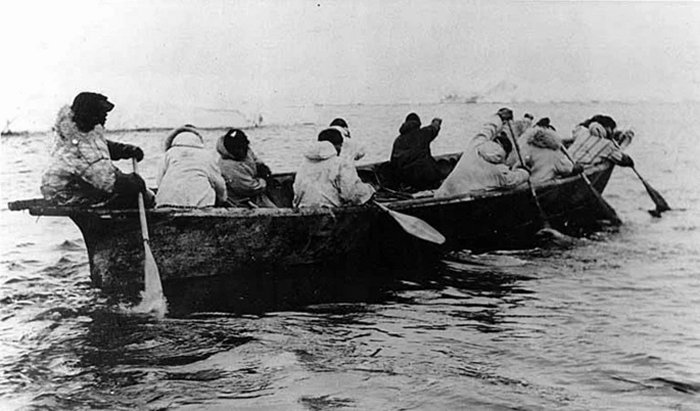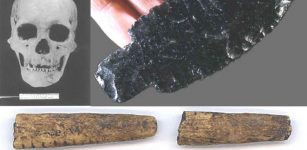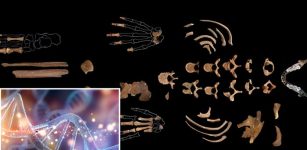Pitted Ware Culture – Neolithic Scandinavians Used Skin Boats To Trade And Travel Across Large Distances
Jan Bartek - AncientPages.com - The Early and Middle Neolithic Pitted Ware Culture (PWC), dating from 3500 to 2300 B.C.E., migrated from the East and settled in modern-day Scandinavia. This hunter-gatherer culture is named after its distinctive pottery, which features deep pits along its circumference.
Credit: Adobe Stock - Stock Source
The PWC stands out among European marine-specialized hunter-gatherer groups. Unlike other groups that gradually incorporated more agricultural products as farming spread, the PWC remained focused on seal hunting and fishing despite farming in Europe for over five centuries. The societies within the PWC were highly adapted to maritime environments, engaging in extensive fishing, hunting, travel, and trade across large water distances. However, the specific types of boats they used remain an open question.
Understanding the maritime technologies employed by the PWC is a critical area of research due to their significant impact on subsequent maritime adaptations in Scandinavian prehistory. Unfortunately, finding intact boats from Neolithic contexts poses considerable challenges. Nonetheless, scientists have found convincing evidence that ancient Scandinavians used skin boats for hunting, travel, and trade activities.
Rock art Image of potential skin boat transporting two reindeer. Photo credited to Martin Kristoffer Hykkerud. Photo from the Verdensarvsenter for Bergkunst—Alta Museum
Researchers suggest that the Pitted Ware Culture (PWC) voyaged extensively across the Baltic Sea and the Kattegat and Skagerrak straits. Evidence supporting these movements includes lithic tools, animals, and clay sourced from regions such as Sweden, Denmark, and Finland.
Globally, many Neolithic cultures utilized dugout canoes or logboats made from hollowed-out tree logs. Some of these dugouts have been discovered at PWC sites. However, their small size—typically only a few meters long—rendered them unsuitable for open sea travel due to their propensity to capsize.
In contrast to logboats, skin boats would have been more effective for long-distance and open ocean transport. The absence of direct archaeological evidence for skin boats is likely due to their poor preservation over time. Indirect evidence suggesting their use includes potential bone frames, rock art depictions, seal oil residues, tools, and faunal remains.
Archaeologists in Germany and Sweden have found potential boat frames that may have supported sewn skins. In northern Germany, retrofitted reindeer antlers from the late Mesolithic period (7th–6th century BC) were discovered. In Sweden, two out of four examples potentially date back to the Neolithic or Bronze Age periods. These findings suggest skin boat construction knowledge existed in northern Europe and could have been used by PWC people. Moreover, rock art images from northern Scandinavia may depict skin boats; some predate and others are contemporaneous with the PWC period or show components linked to PWC culture.
Photo of Umiak skin boat being paddled by Kingikmiut whale hunters in the Cape of Prince Wales, Bering Strait, between 1901 and 1906. Photo by Susan R. Bernardi. Public domain image from Wikimedia Commons
Carvings of possible skin boats from the Ole Pedersen 11A panel of the Alta rock Carvings, Norway. Tracing credited to Karin Tansem, Verdensarvsenter for bergkunst—Alta Museum
The examined rock art panels created by Neolithic Scandinavians depict fishing, whaling, seal hunting, and boats resembling the Umiak skin boats used by the Inuit. These boats are depicted with individuals standing inside, visible as if backlit and semi-translucent like Umiak skin boats. This suggests that Scandinavian Neolithic boats in the rock art could also be skin boats. Some boat bows resemble animal heads, similar to forked harpoon rests on Umiaks viewed in profile. This implies the rock art boats might have had similar equipment, giving an impression of animal heads from a side view.
Akermyren paddle, dated to between 7040 and 6650 BCE. Open-source image from the Swedish History Museum
"By drawing broadly from multiple lines of evidence we have built a case for the use of (seal) skin boats by the PWC of the Middle Neolithic in Scandinavia. We believe that a combination of evidence from fragmentary wood finds, rock art depictions, tool types, tar imprints, and ethnographic comparison show that skin boats are the most likely candidate for the type of watercraft used when PWC voyaged into the open ocean.
See also: More Archaeology News
We argue that skin boats likely complemented other boat types, such as dugout canoes, that would have been used for river, fjord, and near-shore activities. Toward the end of the Neolithic, sewn skin boats would have been replaced by sewn plank boats; a technology that persisted in the region until modern times," the research team writes in their study.
The study was published in Journal of Maritime Archaeology
Written by Jan Bartek - AncientPages.com Staff Writer

























